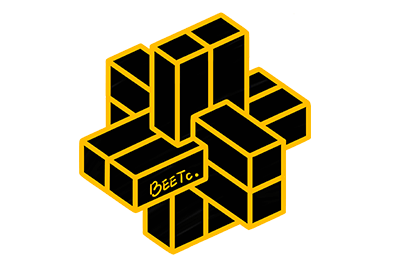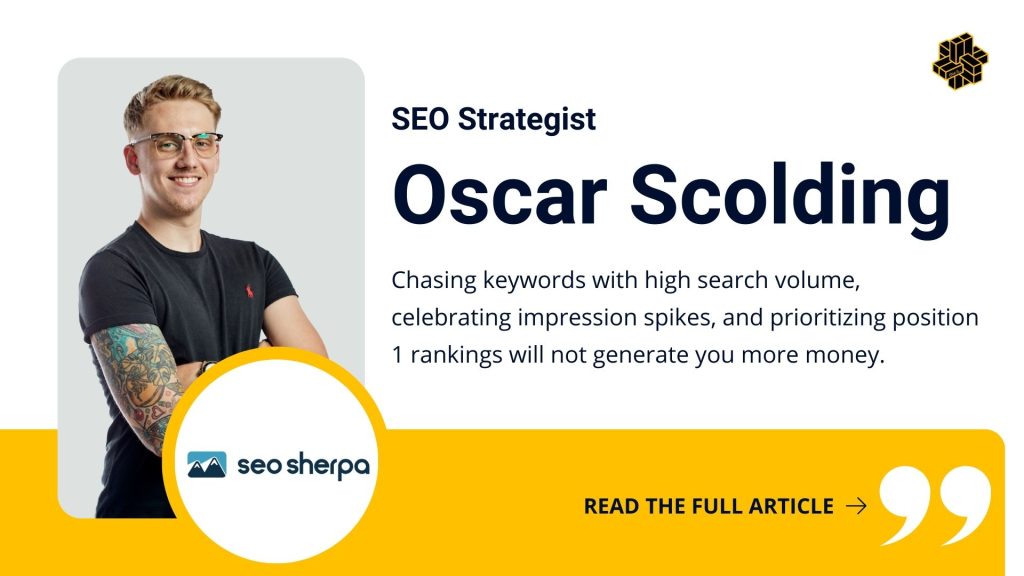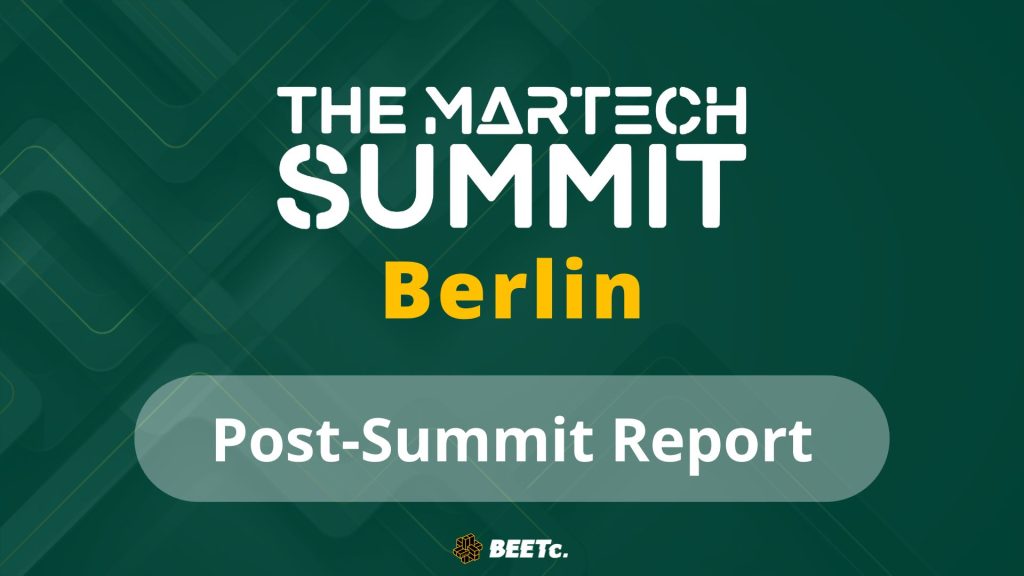Unveiling Insights: Answers to Your Burning Questions from the Summit
Over 350 MarTech professionals & industry leaders professionals gathered at The MarTech Summit Berlin, for a full-on day of deep discussions, insightful keynotes, and invaluable networking opportunities. Now, welcome to our summit’s aftermath—Join us as we unravel the mysteries and shed light on the lingering questions posed to the brilliant speakers who captivated us during the summit!

Unanswered Q&A from The MarTech Summit Berlin
- Panel Discussion | [Marketing Data & Insights] Unlocking the Potential of Data for Exceptional Marketing Results
- Panel Discussion | [Cross-Functional Collaboration] Breaking Silos for Revenue Growth through Aligning Marketing, Sales, and the Customer Journey
- Panel Discussion | [Digital Transformation] Crafting a Vision for Marketing Innovation in the Age of AI & Evolving Legacy MarTech
- Fireside Chat | [Consent Monetisation] Unlocking ROI & Driving First-Party Data Innovation
- Keynote Presentation [Omnichannel Marketing] The Power of AI in Omnichannel Marketing: How to Use & Implement it Successfully
- Panel Discussion | [CX + DX Intersection] Bridging Customer Experience & Digital Experience with MarTech for Seamless, Personalised Engagements
Panel Discussion | [Marketing Data & Insights] Unlocking the Potential of Data for Exceptional Marketing Results
Speaker:
Daniel Sigge, Strategic Advisor for Wikimedia Foundation
❓How do you motivate marketing teams to understand tech and tech teams to understand business?
If you want to win, don’t just foster understanding—make cross-functional collaboration essential for success. Align incentives so that marketing depends on tech insights and tech relies on business impact, ensuring shared goals drive real collaboration. Reward those who bridge the gap and create a culture where knowing both sides isn’t optional—it’s the key to outperforming the competition.
❓What strategies have you found effective in overcoming data silos between Sales and Marketing, especially when using CRMs but facing limited data access?
When breaking silos is necessary, define shared data as essential for success, not just a nice-to-have. Align incentives so that marketing needs sales insights for attribution and that sales rely on marketing data for lead prioritisation. Establish workflows that make transparency the default, not an extra step.
Panel Discussion | [Cross-Functional Collaboration] Breaking Silos for Revenue Growth through Aligning Marketing, Sales, and the Customer Journey
Speaker:
Dijana Dimitrovska, Vice President, Marketing, KoRo
❓Who should be responsible for ensuring alignment in projects? The project team itself, the C-level, etc.
Ideally, the alignment is done at the management/C level before the project kicks off. After that, the project lead/the project team ensures the project is running as it was aligned, or seeks alignment when the scope, the requirements or the underlying assumptions are changing.
❓How do you identify all internal stakeholders for your projects? And not having teams who think they can handle stuff outside of their competencies themselves?
Ideally, you ask the VP/Director/Head of the department to designate the right person from their department to be part of the project. With that, you get the buy-in of the head of the department and the colleague who is supposed to be working on the project. For the second part of the question, I personally like teams who try to go beyond their department to help solve problems. Ideally, when people try to do other people’s work, it leads to either a better understanding of the difficulty or another perspective of it, both of which are beneficial for collaboration and problem-solving.
Panel Discussion | [Digital Transformation] Crafting a Vision for Marketing Innovation in the Age of AI & Evolving Legacy MarTech
Speaker:
Dr. Eric Zhang, Principal Data Scientist, Delivery Hero
Dr. Anja Steinmetz, Head of Marketing Excellence CCS, Synthomer
❓How do you ensure the validity and veracity of AI tools, especially for tasks like extracting insights from long texts such as market reports?
Dr. Eric Zhang: Human-in-the-loop checks: Validate AI outputs periodically with subject matter experts (SMEs). Establish a feedback loop to continuously improve model accuracy.
Dr. Anja Steinmetz: The use of AI for extracting insights from the internet still requires a high level of curation. However, automated tagging of long texts based on a predefined set of categories works well. This significantly improves efficiency when organising and feeding information into dedicated channels.
❓How do you ensure that AI summaries of a, says, 600-page marketing report contain no factual errors or hallucinations while highlighting the most valuable data?
Dr. Eric Zhang:
Chunking and Contextual Embeddings:
Break large reports into smaller, meaningful sections and generate embeddings (semantic vectors) to keep context precise.
Extractive + Abstractive approach:
First, extract key factual data (statistics, trends) using an extractive method. Then generate summarised narratives from these verified data points.
Citation-based summaries:
The AI tool is required to include page or section references for critical data, making validation straightforward.
Dr. Anja Steinmetz: I agree that generating summaries from lengthy market reports is prone to factual errors and hallucinations, and the level of curation is limited. Therefore, rather than summarising the content, the focus should be on automatically tagging information according to a predefined framework of keywords and categories.
❓How does your organisation provide the necessary data for marketers to be able to execute their campaigns effectively?
Dr. Eric Zhang:
Centralised access via CDP:
Marketers access unified, high-quality customer data (behavioural, transactional, engagement) through our CDP.
Self-service tools:
We provide marketer-friendly interfaces (like Looker dashboards or Amplitude) for real-time insights.
❓Integrating AI into your Martech stack, which KPIs do you use to measure the effectiveness & quality of its outputs? Which safety checks do you put in place?
Dr. Eric Zhang:
Effectiveness:
Conversion Rate Uplift
Engagement Rate (CTR, open rates, interaction rates)
Revenue Per User
Quality & Accuracy:
Error or complaint rate
Accuracy rate in validation tests
User satisfaction scores from surveys
Safety checks:
Pre-deployment validation by SMEs.
Continuous monitoring with automated alerts for anomalies.
Periodic random audits of AI-driven recommendations.
Data privacy compliance and responsible AI practices integrated into deployments (GDPR, ethical considerations).
❓How can organisations effectively balance AI automation with human oversight to maximise accuracy and efficiency?
Dr. Eric Zhang:
AI handles scale; humans handle nuance:
Let AI automate repetitive, large-scale tasks like segmentation, trend analysis, and notifications. Humans should oversee strategy, ethical decisions, and creative aspects.
Clear escalation and feedback loops:
Establish systems where AI flags uncertain cases or anomalies for human review.
AI augmentation rather than replacement:
Use AI to provide recommendations rather than full automation for complex tasks (e.g., high-value customer targeting or strategic content creation).
Regular human validation:
Schedule periodic human audits to calibrate AI models and correct drift proactively.
Fireside Chat | [Consent Monetisation] Unlocking ROI & Driving First-Party Data Innovation
Speaker:
Stefan Hock, Director, Performance Marketing & Media, ABOUT YOU
❓What are the trade-offs between consent-driven data monetisation and traditional data acquisition models?
Consent is just the legal requirement to make use of the data. The monetisation of the data collected will vary depending on the business model, so it is mainly if you monetise through ads, a service, or products. I’m not sure what the definition of traditional data acquisition models is. If you run ads yourself, you can also buy 3rd party data from data providers or the ads platforms, so of course, there are a lot of ways in advertising to make use of data that other companies collect (Meta, Tiktok, Google, Data Providers in Programmatic Advertising). But usually, your 1st party data and the consent to share the data with other partners will still give you the best holistic view, improve your measurement/attribution and improve the performance of your marketing campaigns.
❓How do businesses build long-term value with ethical data monetisation practices?
First, building trust through a positive UX and brand experience. Build a transparent data privacy management, educate the user on how consented data is used and, most importantly, add real value when using the data. In eCommerce, the data can be used very well for more personalisation and product recommendations that add high value to the customers, as they can discover suitable products way better. So this can improve the customer experience onsite and via advertising and improve customer LTV.
❓How can businesses monetise consented first-party data while maintaining compliance with evolving regulations?
Implement a certified CMP, work with a competent legal counsellor or in-house legal team, plus have people in your Marketing or Product department who are the business-responsible team, understand the topic deeply and are in constant exchange with your legal contact.
❓How do you solve the third-party cookie problem?
On the one hand, we have a high App share and can make use of identifiers through that as part of our 1st party data strategy. On Android, Chrome still allows 1st party retargeting, so we can effectively reach a lot of users through that. Safari is extremely difficult to target, though we test with ID-based providers but haven’t seen significant success yet. In-app inventory still works well on iOS, but for 1st party data use, it is less accessible than on Android due to the ATT terms of Apple and lower consent rates on ATT. Next to that, in eCommerce, search-based inventory works well without the need for cookie use, mainly Google Search and Google Shopping, plus other price comparison services (depending on the country). TikTok, Instagram, and Facebook, of course, also deliver great volumes and value and are not dependent on cookies.
❓Regarding the lack of data collection and availability, do you rely only on internal support or consider external experts to provide support?
We focus on in-house knowledge and resources, so we rarely work with external experts.
❓Are your attribution models in-house developed? What type of model are you using (MTA, last click…)? Key learnings/failures you can share?
Yes, our models are all built in-house; partially, we use open-source models (GeoLift, Robyn). Our main attribution model is a multi-touch-attribution model, which works cross-device (for logged-in users) and is based on data from Google Analytics, Adjust, CRM data and probabilistic data.
❓Did you build or buy your CMP banner tool?
Our CMP is bought. We started with OneTrust, but we are currently using UserCentrics.
❓What is your experience with cross-device consent sharing? Do you see more issues going forward with stricter browser/device privacy settings?
It’s very important to clearly flag which device consent was given to. Some users are not logged in, and you may only have one Consent ID, but for logged-in users, you can create multiple consent IDs based on device/browser. The legal implications of how to use the data based on that needs to be checked with your Legal team though.
❓Why do I have to give consent every time I visit a website, even if I have the option to opt out at any time?
Consent can be stored for a long time as long as the user is still identified by the CMP (Consent Management Platform). A cookie or login is required to maintain this identification for a browser. If the cookie is deleted (manually or by a browser plugin/setting) or the login information is no longer available, the CMP will trigger a new consent request.
In mobile apps, on the other hand, login rates are typically higher, and once consent is given, the identifier can be used to recognise the user—provided they have allowed identifier sharing on their device. However, an opt-out must always be available to the user at any time.
❓Any smart idea on how to interpolate the missing data from non-consent sessions?
There are aggregated tracking methods that do not track individual users but can be used to extrapolate trends from the data collected at the user level. Probabilistic methods are another option. Additionally, it’s important to specifically request measurement opt-in, allowing users to consent to analytics tracking while still opting out of third-party data sharing if they choose to.
❓Will Google Consent Mode impact first-party data collection with cookie banners?
If Google implements a cookie-restricting setup similar to Safari, it will limit first-party data collection in the same way. This means remarketing campaigns will no longer be possible, and advertisers will need to rely on aggregated user data instead.
Currently, if consent is given, 1-to-1 remarketing based on cookies still works. However, if stricter cookie restrictions are enforced, advertisers will need to adapt their strategies accordingly.
Keynote Presentation | [Omnichannel Marketing] The Power of AI in Omnichannel Marketing: How to Use & Implement it Successfully
Speaker:
Stefan Leifhelm, Senior Enterprise Account Executive, SAP Emarsys
❓Are you ever challenged by your IT to streamline your stack? If so, how do you deal with it?
As we are a vendor of SaaS solutions, the question is not relevant to us.
❓What are the best strategies for integrating AI into an omnichannel marketing framework?
Successful AI integration requires clear goals and clean as well as unified data. The key is to first define what activities in your day-to-day marketing are the most resource-intensive work and have the largest impact. See if you can get AI to support those activities, start small, experiment, and scale AI-driven insights where they deliver the most impact.
❓What are the key challenges in measuring omnichannel marketing performance, and how can AI help?
The main challenges include data fragmentation, attribution modelling, and real-time analytics. AI can help by unifying data sources, enabling predictive analytics, and automating reporting.
❓How can brands ensure a consistent voice and message across different digital and offline touchpoints?
Consistency requires a centralised customer engagement platform that enables unified messaging. Online & Offline Customer Data must be unified in one platform in order to orchestrate personalised campaigns across multiple channels be it online or at your Point of Sales (PoS). A great way to do this is by having a loyalty program that can be used online and in-store.
❓What are the best ways to use AI to unify customer data from various sources without compromising privacy and compliance?
AI can help unify data by leveraging customer data platforms (CDPs) while adhering to GDPR and other regulations. Once the Data is correctly ingested in the Marketing Automation, first-party data only can be used to segment audiences effectively and apply AI-driven insights while ensuring full compliance with data protection laws.
❓Which marketing channels benefit the most from AI-driven insights, and how can brands prioritise their AI investments?
AI is most impactful in email marketing & web, particularly around the personalisation of product recommendations such as Next Best Offer (NBO) and Next Best Action (NBA). Brands should prioritise AI investments based on customer engagement metrics and revenue impact.
❓Can AI bridge the gap between online and offline customer experiences?
Yes, if online & offline data is unified in one platform, AI, for example, can analyse in-store purchases and use that data to personalise future digital interactions, ensuring consistency in messaging and offers across all customer touchpoints.
❓How do you manage orchestration across journeys in the platform?
SAP Emarsys provides journey orchestration tools that allow marketers to map out customer interactions across channels. AI helps by optimising engagement times and preferred channels, personalising content, and automating next-best actions based on customer behaviour.
❓Is SAP Emarsys for B2C mostly? Because most of the companies mentioned are B2C companies.
Our predominant customer base is B2C, as we are historically a B2C tool. Since the acquisition of SAP, we have also focused on B2B and have an Account Engagement model that allows for typical B2B cases. Typical B2B companies are developing into companies with more B2C use cases, e.g. B2B Web Shop for customers. For this, we offer great solutions as we can blend both B2B & B2C words in one platform.
❓How much do you have to invest – data engineers, analysts, mobile/web engineers, etc. – to deliver satisfactory quality?
The investment varies based on company size, industry, and marketing goals. SAP Emarsys simplifies implementation with out-of-the-box AI-driven automation, reducing the need for large technical teams. However, for advanced customisation, brands may need dedicated analysts and engineers to maximise ROI.
Panel Discussion | [CX + DX Intersection] Bridging Customer Experience & Digital Experience with MarTech for Seamless, Personalised Engagements
Speaker:
Małgorzata Marcinkowska, Head of StratOps CoE, Digital, Sunrise
❓How are you dealing with growing concerns about the privacy of consumer data when it comes to personalised CX?
I am a big fan of two approaches: progressive profiling and a preference centre. While they may seem like opposing strategies, I recommend testing both to see which resonates better with your audience. In my experience, different customer segments may prefer different approaches.
In both cases, the prospect or customer is in control, making their own choices. Permission-led marketing and personalisation would, in my opinion, be the best approach.
❓Could you elaborate on what you meant with the universal data layer, which is hopefully the next big thing in terms of personalisation?
The concept of a universal data layer comes from the fact that more and more companies are now using cloud data warehouses/ lakes to store their data.
Cloud data warehouses/ lakes now have very advanced functionalities when it comes to data management and governance. They also easily integrate/ API with many of the MarTech solutions.
Also companies are finding out, that it is very challenging and often expensive to move data from one system to another.
So, the concept of the universal data layer states that companies should be using their cloud data warehouses/ lakes to store any and all data flowing across the organisation. And then you apply “software on the top of it to to arbitrate what is correct and canonical data, governing how it gets written or read, in what format, validated with standard definitions and relevant business logic”. This part is usually delivered by elements of the MarTech stack: systems like CRM, MDM, PIM, DAM and more and more Composable CDP.
❓What type of intent based martech stack do you have experience with?
I know of: https://www.madewithintent.ai/
and for B2B: https://www.leadspace.com/solutions/marketing/
❓What’s your go-to MAP, CRM, and CDP?
Any MarTech solution should be chosen based on a specific set of use cases.
Therefore, it is difficult to recommend a go-to solution, as a solution that works for one company may not work for another.
There is a great book by Tony Byrne and Jarrod Gingras, The Right Way to Select Technology, which may help you define your own set of use cases and determine the best approach for selecting the most optimal technology.
However, one thing I can recommend: If your company has a mature data management and governance framework and is already an advanced user of cloud data solutions, I strongly recommend considering a composable CDP. There are a few good ones available, but the most important factor is selecting a CDP that can integrate with and operate on top of your cloud data warehouse or data lake—without requiring you to transform or move your data for it to function.
Throughout the event, your inquiries ignited conversations and fueled our curiosity. Your engagement has truly enhanced the experience for all involved. For those unable to attend the live sessions or wanting to revisit the insightful discussions and presentations, we invite you to access the BEETc On-Screen on our learning platform. Let’s continue to connect, learn, and grow together, fostering innovation and excellence in the ever-evolving landscape of marketing technology. We eagerly anticipate welcoming you back at future events. Of course, there are more exciting in-person events throughout the year, please visit:
Stay tuned for updates!
⭐ Register now! Yearly & Monthly Passes available!
BEETc On-Screen, our On-Demand Learning Platform, where you can find all the previous sessions of The MarTech Summits, CXO Innovation and exclusive BEETc On-Screen Webinars!
Gain more MarTech insights here: https://themartechsummit.com/content-library/
Last updated: March 2025













